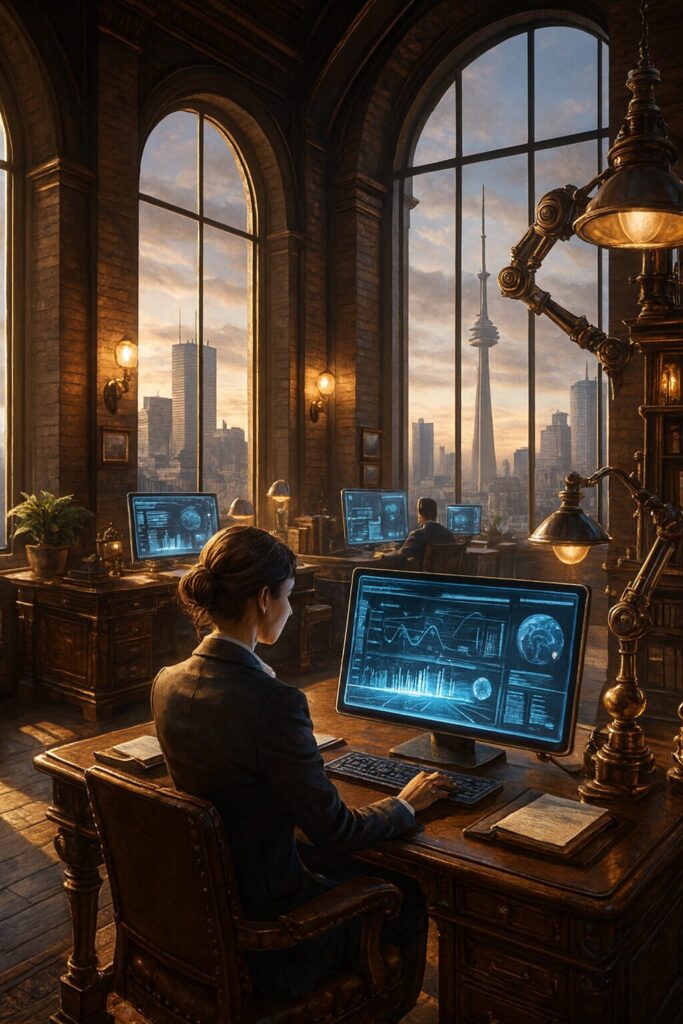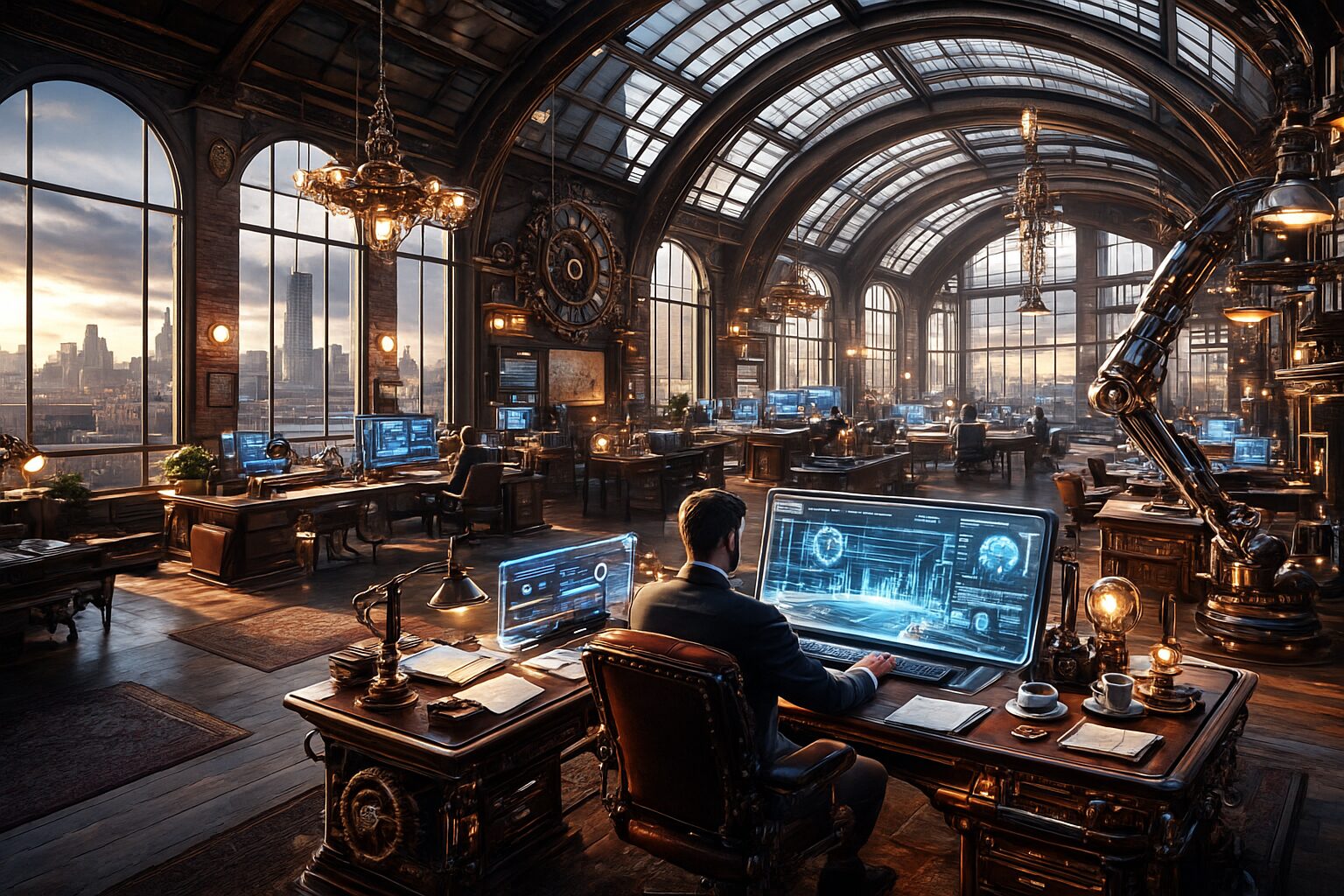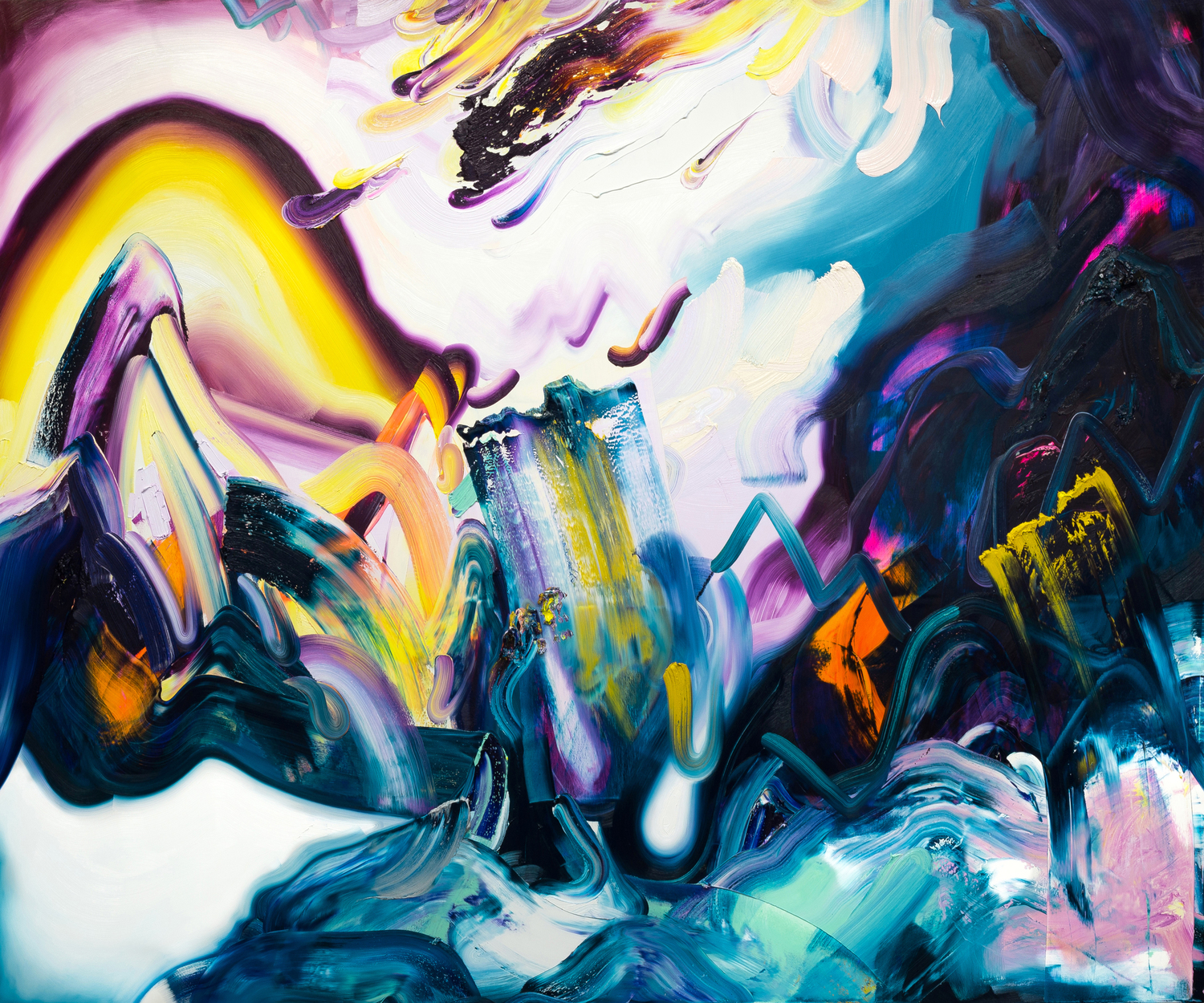Some thoughts about AI and Creativity
Originally written by Randy Gladman for Akrylic.com
November 17, 2025
Who Wrote the Plan?
Every November, I sit down to write a strategic plan for the following year for the professional services business I lead. I dread this exercise. Strategy is hard, and synthesizing dozens of competing priorities into a cohesive and meaningful direction is even harder.
This year, I did something different.
I gathered my senior team for three focused one-hour sessions. We brainstormed ideas on a Miro digital whiteboard and pulled together our best thinking. Once we had a big messy collage of ideas—post-it notes, arrows, colour-coding, and notes-on-top-of-notes—I carved out some quiet time, opened my favorite AI (I have paid accounts on three of them), and attempted to turn this chaos into a cohesive vision.
My briefing to the AI, who I call “Cassandra”, was simple:
“I’d like your help assembling the content I need for the strategic plan for our business for 2026. I lead a professional services organization in commercial real estate. I want you to act as both a seasoned business strategist and an experienced writer. We’ll work section by section, and I’d like you to refine our ideas into an executive-ready strategy.”
I then went section by section, pasting in bits and pieces from the brainstorming session and asking Cassandra to digest and craft. She didn’t write the strategy. She collaborated with me. She summarized, reorganized, challenged unclear logic, elevated the structure, tightened the messaging, and helped me transform rough brainstorm notes into a polished, intelligent, 10-page plan that will guide our business in 2026.
What usually takes me 8–10 hours was done in less than two. More importantly, the final product is materially better than what I could have produced alone. And I say that as someone who takes pride in being a strong writer.
This experience—one of many lately—is actively reframing how I think about AI and its role in human creativity.
Is AI Creativity “Real”?
I’ve been debating this question with a close artist friend: If a work is mostly produced by AI, is it still creative? Someone always has to prompt the AI—but is prompting enough to claim authorship?
Our debate centres on projects like the incredible funk and soul recreations of pop and rock songs posted by the Instagram account @fakemusic_br. Are these AI-generated musical hybrids legitimate creative works? Or should they be dismissed as “AI slop”?
What fascinates me is the collaboration: a human spark of curiousity, the prompting of an AI engine, and a final product that neither person nor computer could create alone. Yes, sometimes there’s a hint of that “tinny,” uncanny AI quality if you look closely. But that is fading—just like early digital animation once looked strange, and now it doesn’t.
I’ve come to believe that, when used well, AI supercharges human creativity. It expands what’s possible for people with ideas but not necessarily the technical skills to execute them. And even for those with the skills, it dramatically increases speed and output.
We’ve seen this evolution before.
Technology Has Always Remixed Creativity
When photography was invented, artists could suddenly represent the world visually without spending hours drawing or painting. Digital photography amplified that shift again—eliminating development time, reducing cost, and making image-making accessible to everyone.
These technologies didn’t destroy visual art; they democratized it.
The world now takes and shares exponentially more images. Yes, we’re awash in low-quality content and old methods sometimes feel anachronistic. But we’re also seeing some of the greatest, most important images ever created—often by people with no formal training at all.
AI is following that same trajectory.
We Don’t Get to Opt Out
Film democratized image-making, digital democratized photography, and AI is now democratizing everything else. Whether we like it or not. Not incrementally—fundamentally.
We can cling to old methods—and some always will, just as some people still hand-develop film in darkrooms—but the centre of gravity has already shifted. The world that creates with AI will move faster, think bigger, produce more, and work smarter.
My experience crafting our 2026 strategy with Cassandra wasn’t about automation. It was about augmentation. Amplification. Human insight, multiplied.
Creativity—business creativity, artistic creativity, strategic creativity—has entered a new era. One where new tools don’t supplant us; they elevate us. After three years of increasingly deep use of AI, I am less worried about replacement. Creativity still begins with us. The human idea starts the process, and the human mind evaluates and shapes what AI produces.
I’m all in. My creative ideas have always been limited by skill or time, or both. Using ChatGPT, Grok, Perplexity, CoPilot, and/or Gemini to augment and amplify my thinking has opened my eyes to how much more creativity is within reach. And it’s clear to me that using this tool isn’t optional. While still somewhat novel, AI will soon be essential for acceptable levels of productivity.
(And before you ask: yes, AI helped me write this article.)



